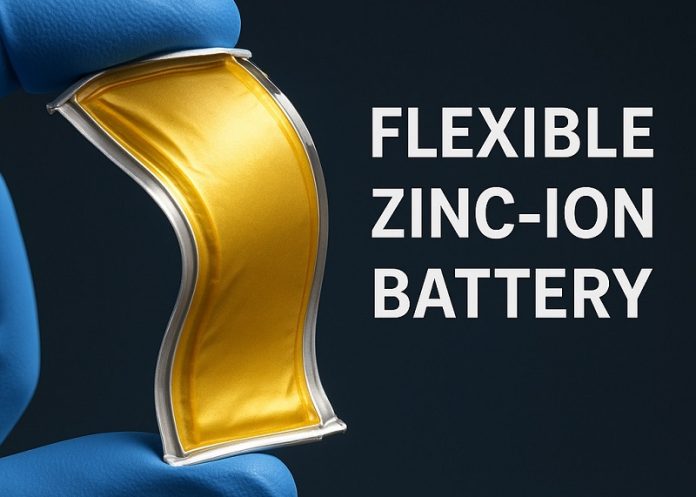
Scientists in China have developed a new type of bendable battery that keeps working even when twisted or folded, offering exciting possibilities for powering flexible and wearable electronics.
Led by Professor Hu Linhua from the Hefei Institutes of Physical Science (HFIPS), the research team created a tough and flexible gel-like material called a hydrogel electrolyte that dramatically improves the performance of aqueous zinc–ion batteries (AZIBs).
The key to this breakthrough lies in using common and eco-friendly ingredients—urea and zinc acetate.
Zinc acetate is a cheap and environmentally safe material, but it usually doesn’t dissolve well, which limits how much energy the battery can store and deliver.
To solve this, the scientists found a clever way to increase its solubility using a chemical effect known as “salting out.”
This process removes water molecules from the surface of the polymer chains in the gel, allowing more zinc salt to dissolve and strengthening the gel’s internal structure.
The result is a more durable and stable battery material that can stretch up to 557% and withstand high pressure without breaking.
What makes this new battery especially promising is how well it performs under real-world conditions.
During operation, a protective layer naturally forms on the battery’s surface, preventing harmful buildup and making the zinc plating and stripping process more efficient.
Unlike many other batteries that suffer from short circuits or performance loss over time, this design prevents dendrite formation (tiny needle-like structures that can damage batteries) and avoids passivation, a chemical process that can block battery performance.
Dr. Li Zhaoqian, one of the researchers, explained that this approach solves many of the durability issues found in traditional low-cost zinc batteries.
By using the newly designed hydrogel electrolyte, the team achieved impressive results, including high efficiency and a long cycle life—even after many uses.
Perhaps most exciting is how the battery performs in flexible pouch form. Even after being bent at extreme angles—up to 180 degrees—it still maintained a steady voltage.
This kind of flexibility makes it a perfect fit for modern portable electronics, such as wearable health monitors, foldable phones, and flexible sensors.
The team also tested how well the battery handled fast charging, high power output, and storage over time. The new battery consistently delivered high capacity and resisted self-discharge, a problem where batteries lose power while not in use. In contrast, similar batteries without this new electrolyte showed significant performance drops.
This study not only demonstrates a big leap in zinc-ion battery technology but also opens the door to using similar strategies for other metal-based batteries.
With its combination of low cost, environmental safety, flexibility, and high performance, this new battery design could play a key role in powering the next generation of smart, wearable, and portable devices.



